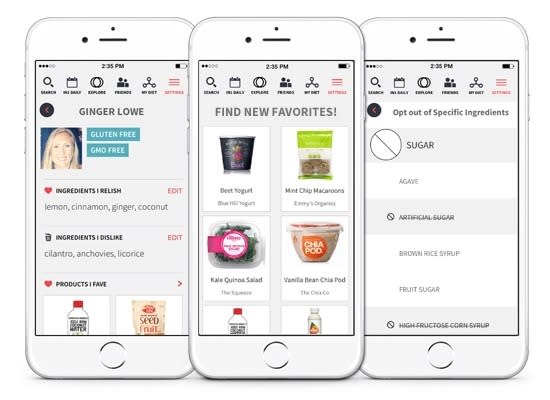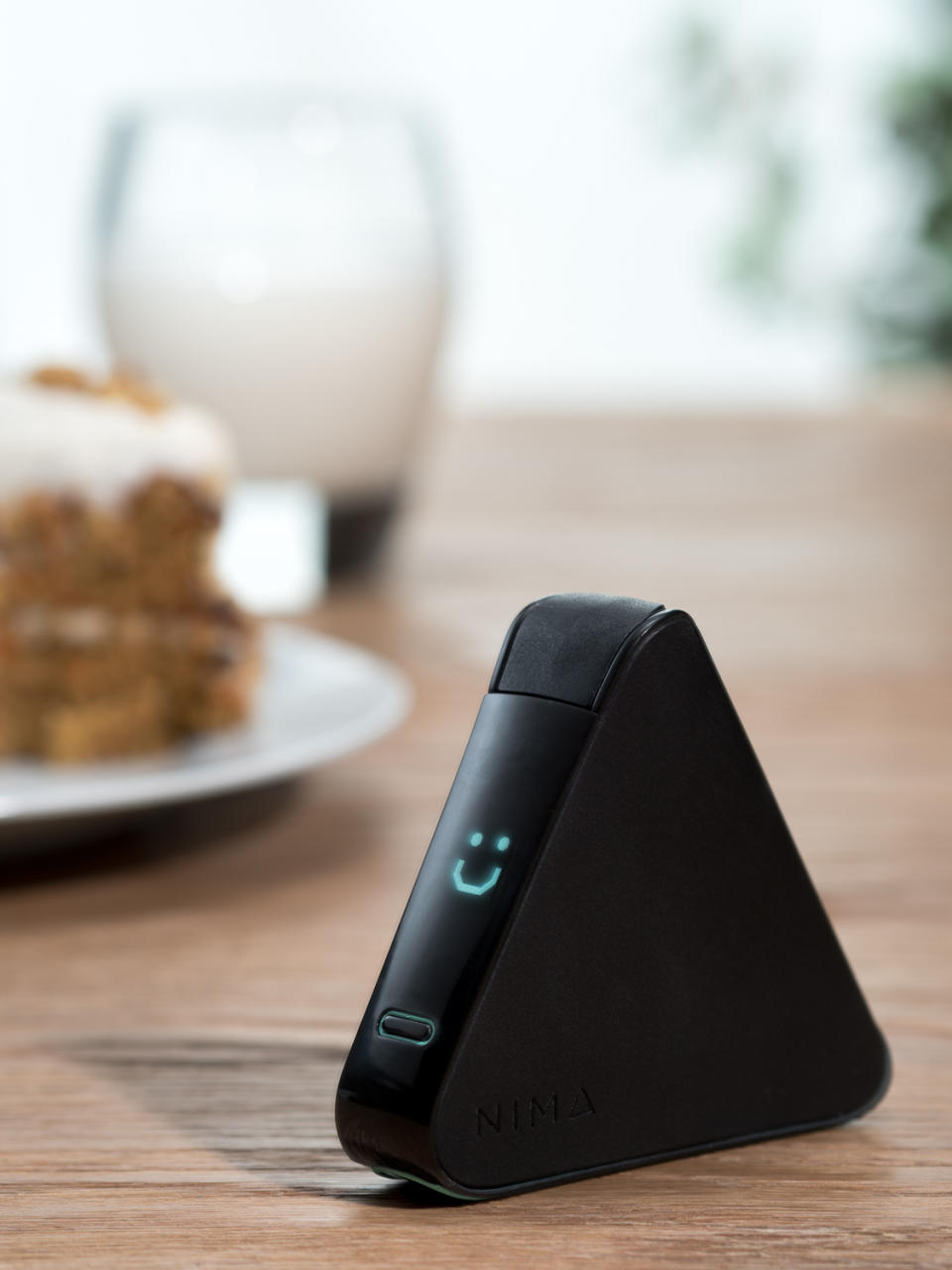6 Apps, Gadgets, and Services for Tech Foodies to Try
Welcome to Tech Tuesday, a weekly column featuring different aspects of food and technology. Come back each week for product reviews, lists of our favorite gadgets, and in-depth looks at how technology is changing how and what we eat.

Ingredient 1 allows users to search a database of more than 35,000 products based on parameters they set up in their customized profile.
Does it seem like every other day brings the launch of another new web site, app, product, or service promising to use technology to change the way we eat? That’s an exaggeration, but according to Food + Tech Connect founder and CEO Danielle Gould, a tremendous amount of money and entrepreneurial energy is flowing into the food-tech space.
Related: What Happens to Booze in Space?
In 2014, Gould says $1.9 billion was invested in U.S. food tech and media companies, which is up from $1 billion invested in 2013. And the movement is hardly winding down. In fact, Gould says we’re still in the early days. The good news is that there’s a lot to be excited about, she said at the recent James Beard Foundation Food Conference: Rethinking the Future of Food, where she opened a panel called “Financing the Future.”
Related: This Restaurant Serves Dinner From 2050
Gould founded Food + Tech Connect in 2010, and calls it “the world’s largest community for food, tech, and innovation.” Through their web site, newsletter, events, and online and in-person courses, Food + Tech Connect offers culinary innovators the information, connections, and skills they need to create a better future of food.” This means that Gould is on the pulse of the food-tech scene, and privy to what’s coming next. Leading up to the conference, we spoke to Gould about which food technologies excite her the most and what we can expect to see in the near future.

Danielle Gould, founder and CEO, Food + Tech Connect
The food-tech space is huge and there’s a lot to be impressed with, says Gould. She’s particularly interested in what’s happening around health, and believes current and emerging technologies will make it easier to eat more healthfully and according to personal dietary needs. Gould points to Ingredient1 as an example of this kind of technology. An app built around the collection and distribution of data, Ingredient1 allows users to search a database of more than 35,000 products based on parameters they set up in their customized profile. Currently, Ingredient 1 allows you to locate those products at New York City retailers, but they’re in the process of scaling this feature nationwide. An app like this gives people access to information, so they can make more informed decisions, which Gould sees as one of the biggest positives around technology and food.
Related: How One Brooklyn Chef (Sort of) Embraces Technology
Access to information is at the heart of another one of Gould’s food tech picks. Nima is a handheld sensor that tests food for allergens and delivers results in as little as two minutes. At present, Nima only tests for gluten, but peanut and dairy are in the works. Technology like this means that the growing number of people with food allergies can “eat with confidence,” says Gould. While Nima is hardly a bargain — a starter kit will set you back $249 — it represents a move in the right direction. In the past, notes Gould, this kind of testing required sending samples to a lab, which was expensive and time consuming.

Nima is a handheld sensor that tests food for allergens and delivers results in as little as two minutes. (Photograph: 6SensorLabs)
If gadgets aren’t your thing, one of the main ways the average consumer can experience the intersection of technology and food is through one of the many meal delivery services, including Blue Apron and Plated. While services like these make it easier to eat in accordance with personal restrictions and preferences, they tend to be expensive, putting them out of reach for most consumers.
Related: 5 Smart Kitchen Tools to Help You in the Kitchen
Gould points to Handpick as a company that has the potential to reinvent the model. Rather than trying to own the supply chain, Handpick works with Safeway for ingredients, and partners with a company called OnTrac to manage deliveries. Gould calls this “leveraging existing infrastructure,” which means a less expensive service. Handpick meals start at $5.50 (plus delivery), while Blue Apron is closer to $9 per meal (with free delivery) and Plated costs more than $10 per meal. Gould reports that Handpick is hoping to lower costs even further by launching a pick-up service.
Related: 11 Must-Watch YouTube Cooking Shows
Despite dropping prices, meal delivery services remain a luxury for most Americans. But Gould is optimistic about the future and thinks partnerships are part of the solution. Grocery delivery service Instacart recently teamed with both Yummly and All Recipes, which should streamline the recipe selection and ingredient delivery process, and as affordable alternatives to meal delivery, they’re accessible to a larger audience.
Related: Do Smart Pressure Cookers Really Work?
Gould sees these kinds of strategic partnerships as being essential to building a better food system. As food tech companies mature, says Gould, they’re going to have to get smarter about their business model and ideally this leads to more affordable products: “Right now, most of the solutions are very expensive, they’re not accessible to people at all socio-economic statuses, so my hope is that there’s more investment in creating companies and technologies that make good food accessible to everyone.”

